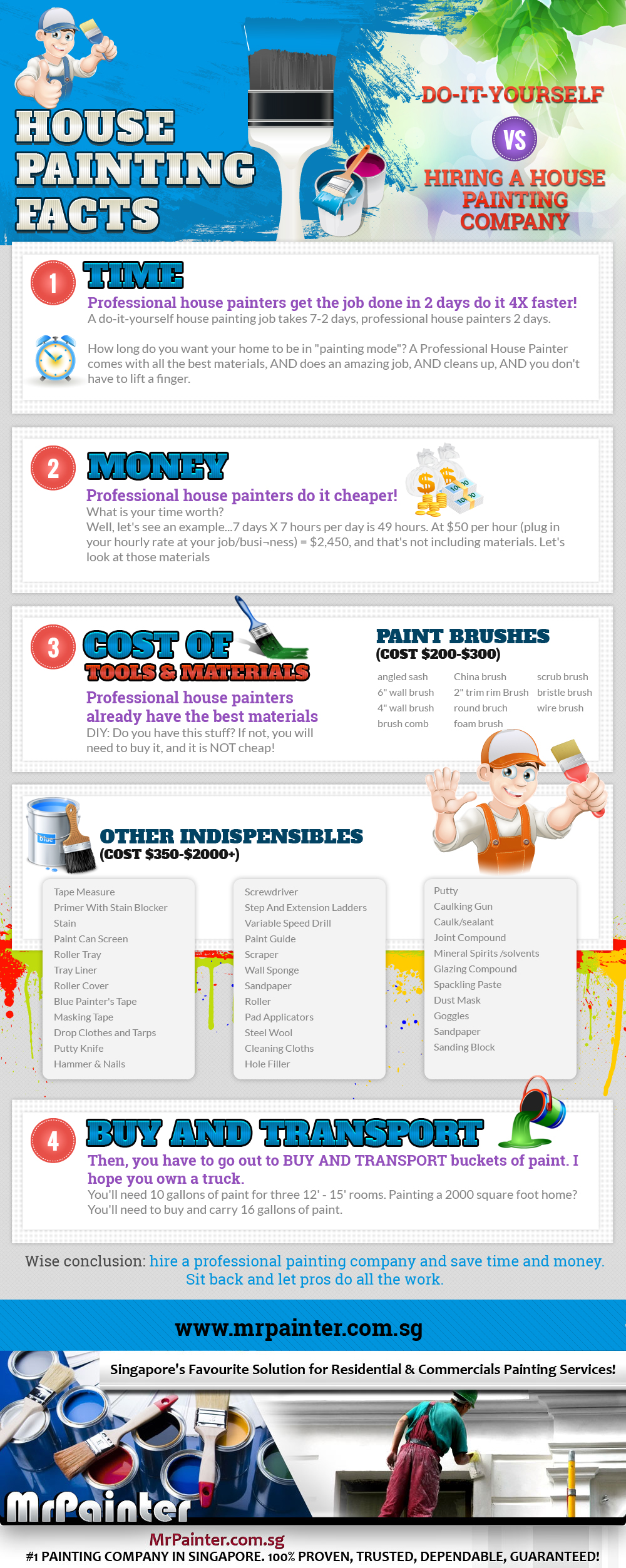The Impact Of Weather Conditions On Industrial Outside Painting: Trick Considerations
The Impact Of Weather Conditions On Industrial Outside Painting: Trick Considerations
Blog Article
Post By-Weiss Duckworth
When you're planning a commercial exterior painting project, do not underestimate the impact of climate on your outcomes. You need to think about aspects like temperature level, humidity, and rainfall, as they can make or break your paint job. As an example, did you understand that ideal conditions call for particular temperature arrays and moisture degrees? Failing to monitor these elements can bring about unequal surfaces and even damages to fresh paint. Comprehending these elements is key to accomplishing a durable, expert end result. So, what specific weather conditions should you watch out for?
Temperature Considerations
When it pertains to industrial outside painting, temperature plays a crucial role in the outcome of your job. If you're painting in severe warmth, the paint can dry out also promptly, leading to issues like poor bond and irregular surfaces. You intend to go for temperatures in between 50 ° F and 85 ° F for the very best results. Listed below exterior painters portland , paint may not heal correctly, while above 85 ° F, you take the chance of blistering and splitting.
Timing your project with the best temperatures is important. Beginning your job early in the early morning or later on in the mid-day when it's cooler, particularly during warm months.
Also, take into consideration the surface temperature level; it can be dramatically more than the air temperature, specifically on warm days. Make use of a surface area thermometer to inspect this prior to you start.
If temperatures are unforeseeable, watch on the weather prediction. Unexpected temperature level drops or warm front can thwart your strategies. You don't wish to start painting only to have the problems change mid-project.
Moisture Levels
Humidity degrees significantly influence the success of your industrial external paint project. When the humidity is too high, it can impede paint drying out and curing, bring about a range of problems like inadequate attachment and finish quality.
If you're intending a work throughout wet conditions, you may locate that the paint takes longer to dry, which can extend your task timeline and increase costs.
On the other hand, low moisture can additionally posture obstacles. Paint might dry as well rapidly, preventing appropriate application and resulting in an unequal coating.
You'll intend to keep an eye on the moisture degrees closely to ensure you're functioning within the ideal array, commonly in between 40% and 70%.
To obtain the most effective outcomes, consider making use of a hygrometer to determine moisture prior to starting your project.
If you discover the degrees are outside the optimum array, you may require to adjust your routine or select paints made for variable conditions.
Constantly consult the supplier's standards for particular referrals on moisture resistance.
Rainfall Impact
Rain or snow can substantially interrupt your industrial exterior painting plans. When precipitation occurs, it can remove newly used paint or create an uneven finish. Preferably, you intend to pick days with dry weather condition to make sure the paint sticks correctly and remedies efficiently. If you're caught in a shower, it's best to stop the task and await conditions to improve.
Furthermore, snow can be much more destructive. Not just does it produce a damp surface, yet it can additionally decrease temperature levels, making it difficult for paint to completely dry. This can bring about concerns like peeling or blistering down the line.
It's crucial to inspect the weather forecast before beginning your job. If https://www.southernliving.com/home/colors/interior-paint-color-trends or snow is forecasted, think about rescheduling.
Always keep in mind to enable appropriate drying out time between layers, especially if the weather continues to be unforeseeable.
Final thought
Finally, keeping an eye on the weather is essential for a successful commercial external painting task. By monitoring temperature level, moisture, and precipitation, you can guarantee the best conditions for application and curing. Bear in mind to intend your work around beneficial weather condition and always adhere to supplier guidelines. With the right technique, you'll accomplish a long-lasting, attractive coating that can hold up against the elements. Don't allow the weather capture you off guard-- remain informed and repaint wise!
